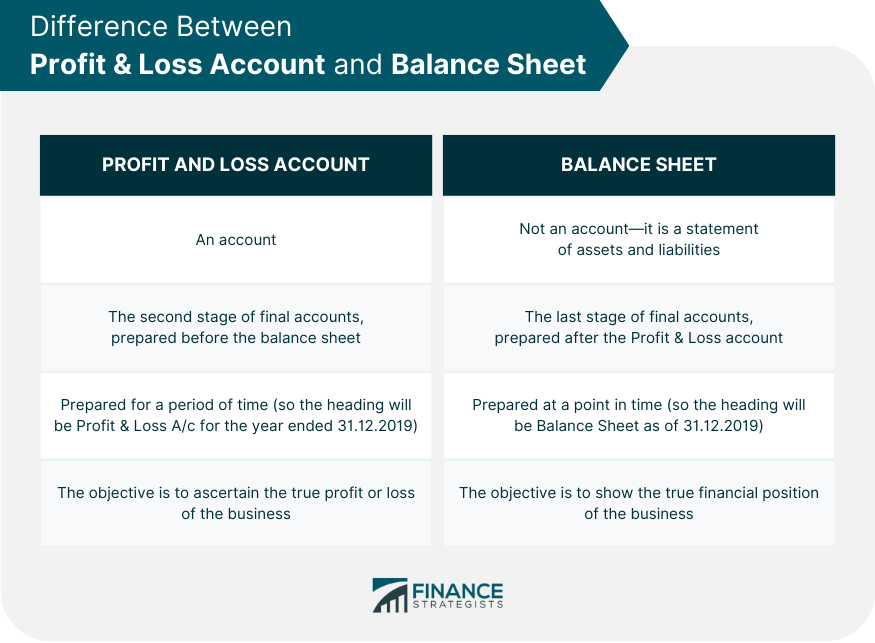A summary is given below of the differences between the profit and loss account and balance sheets.
Difference Between Profit & Loss Account and Balance Sheet FAQs
A profit and loss account (P&L) reports the true financial position of the business, i.e. whether you are making a profit or loss over a period of time. A balance sheet reports your assets/liabilities at a point in time so will never show if you've made a profit or loss.
Balance sheet is prepared by putting all your assets on one side and all your liabilities and capital on the other side. Your equity is calculated as the difference between the two sides.
Liabilities are an obligation or debt that must be repaid by a certain date.
Accounts show our financial position by recording our assets, liabilities and equity.
The following are types of accounts: assets, liabilities, equity, revenue/income, expenses/loss, capital
True Tamplin is a published author, public speaker, CEO of UpDigital, and founder of Finance Strategists.
True is a Certified Educator in Personal Finance (CEPF®), author of The Handy Financial Ratios Guide, a member of the Society for Advancing Business Editing and Writing, contributes to his financial education site, Finance Strategists, and has spoken to various financial communities such as the CFA Institute, as well as university students like his Alma mater, Biola University, where he received a bachelor of science in business and data analytics.
To learn more about True, visit his personal website or view his author profiles on Amazon, Nasdaq and Forbes.











